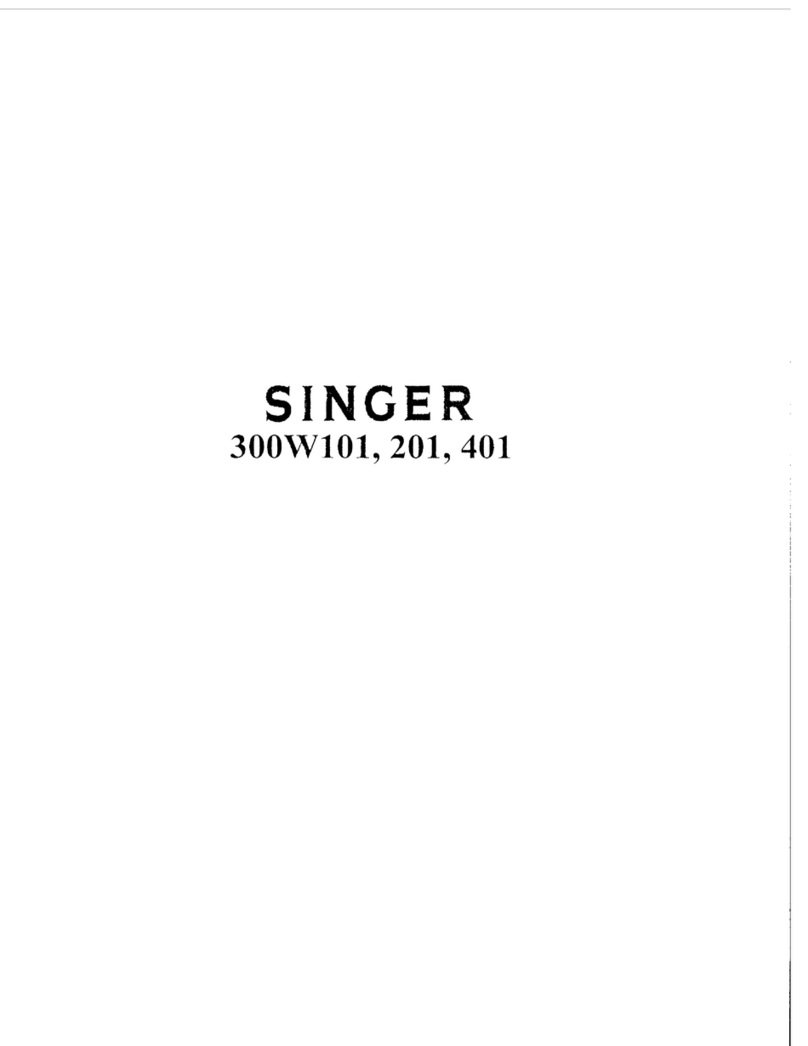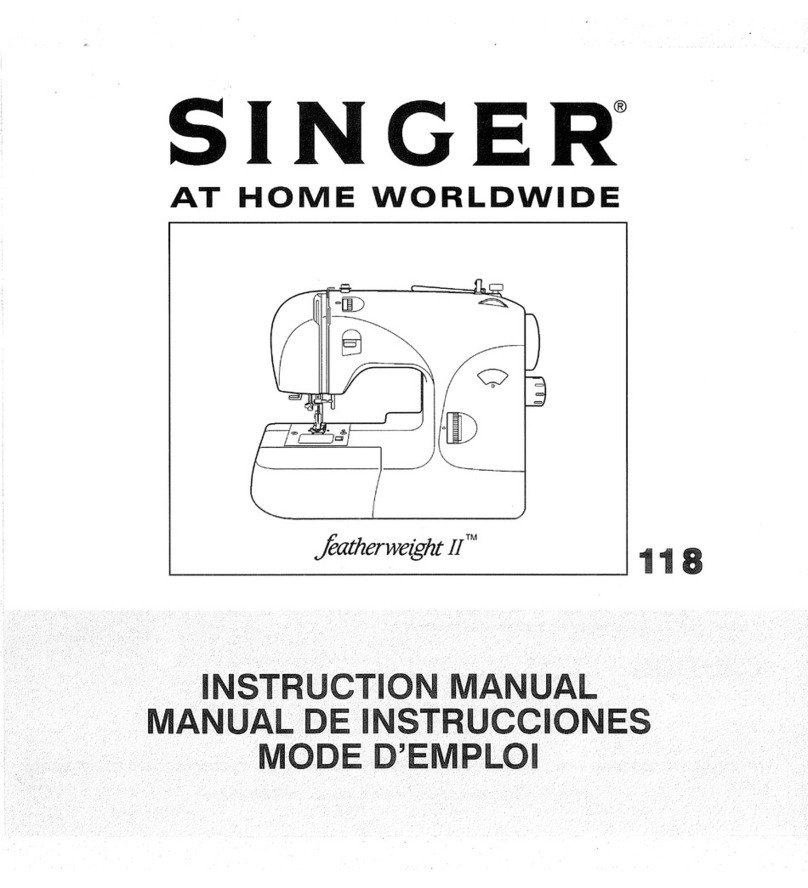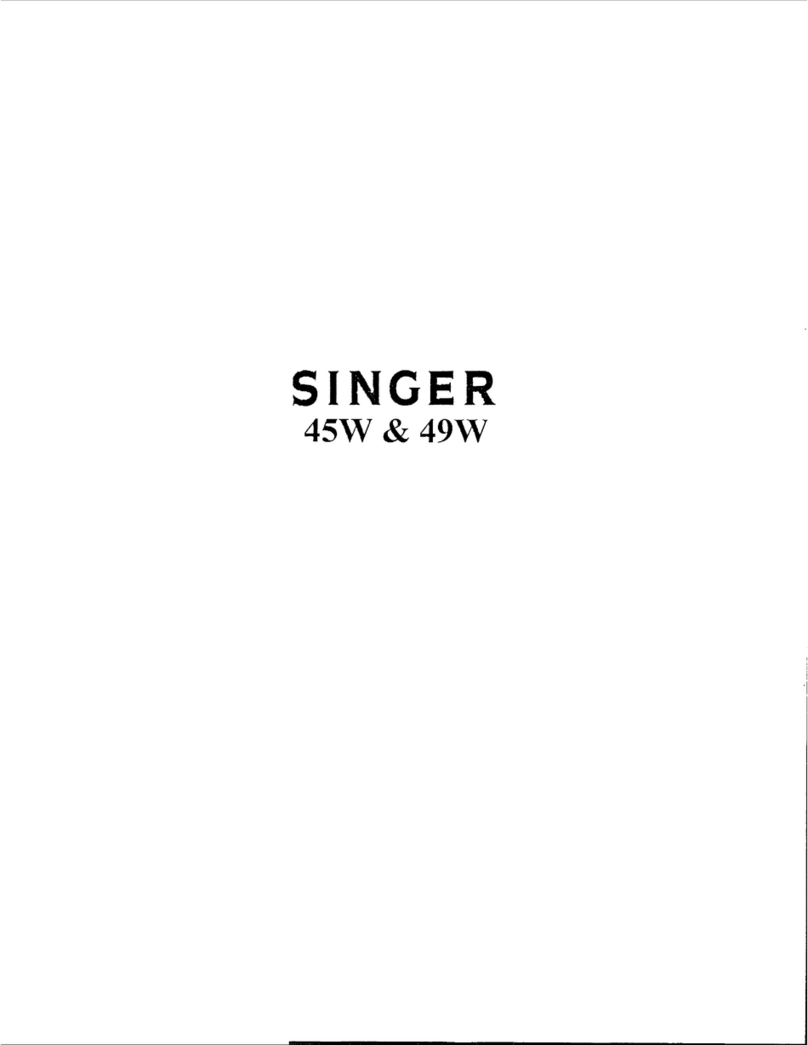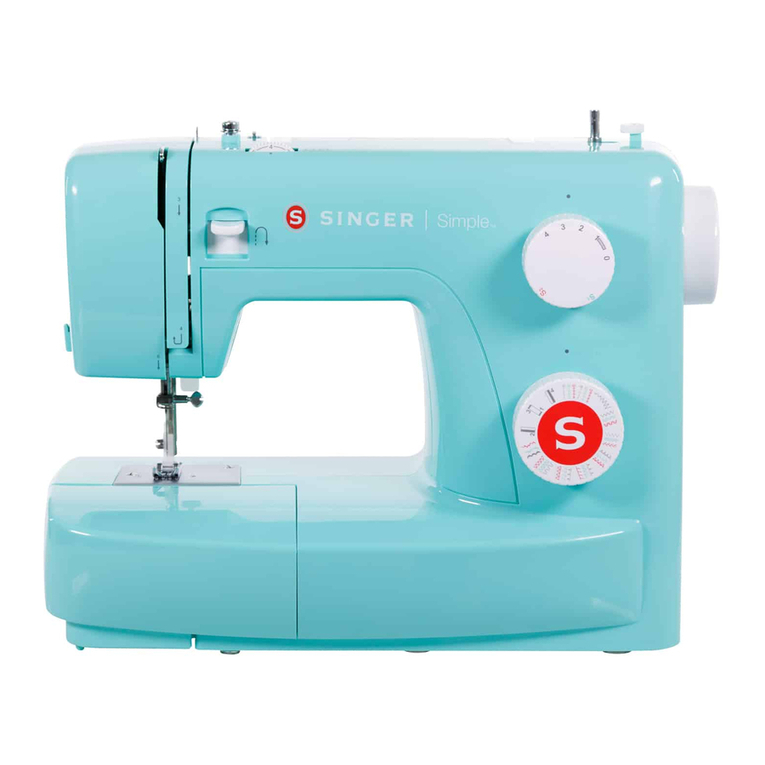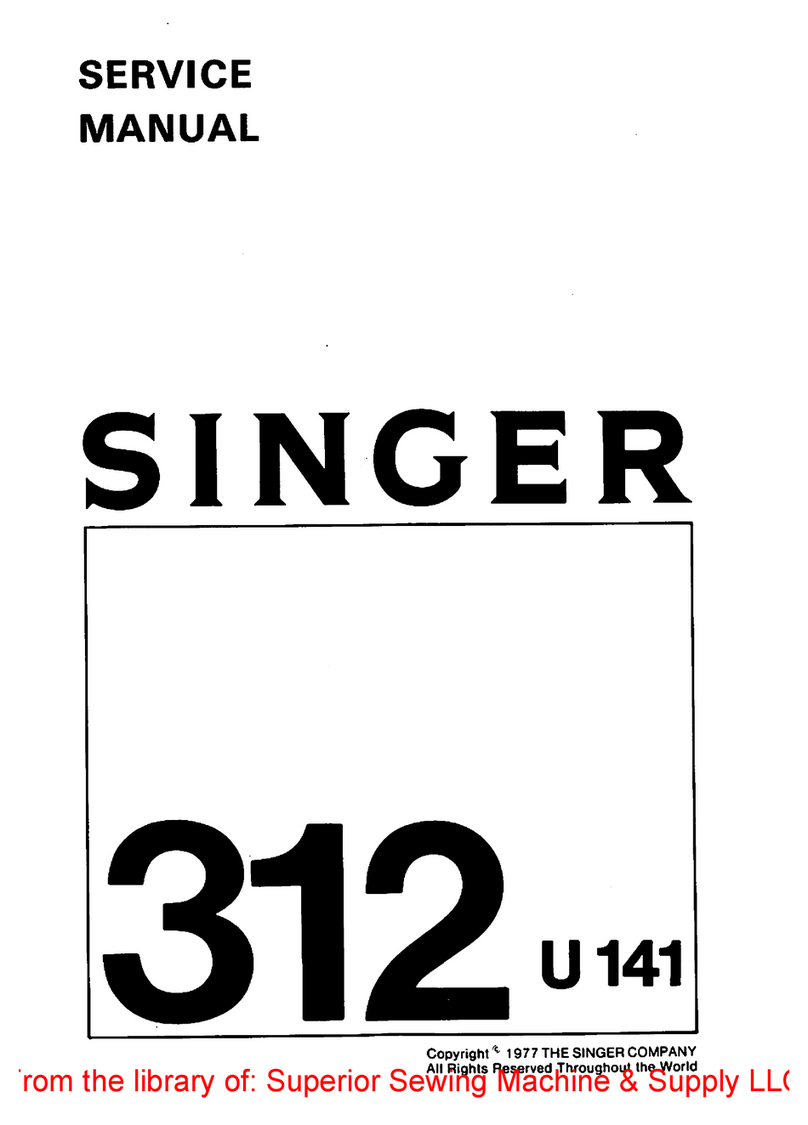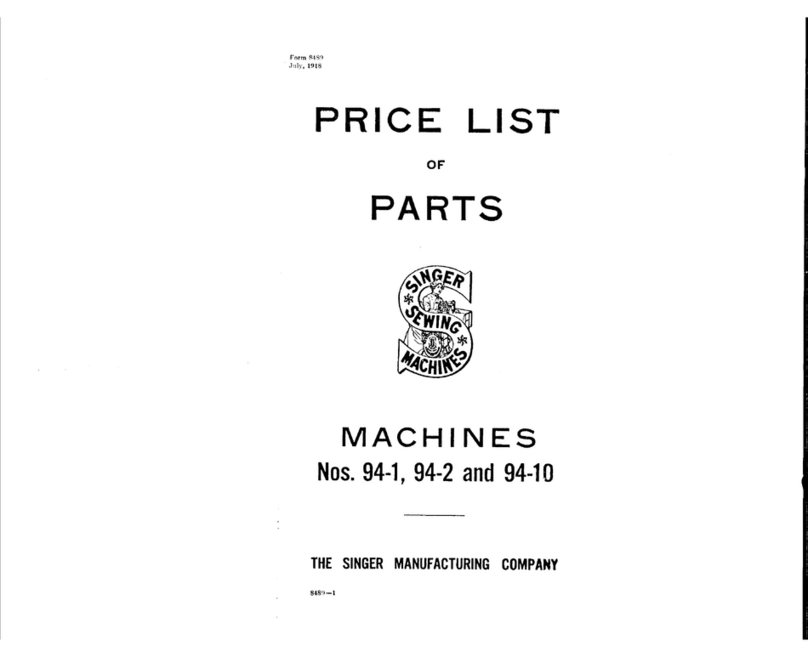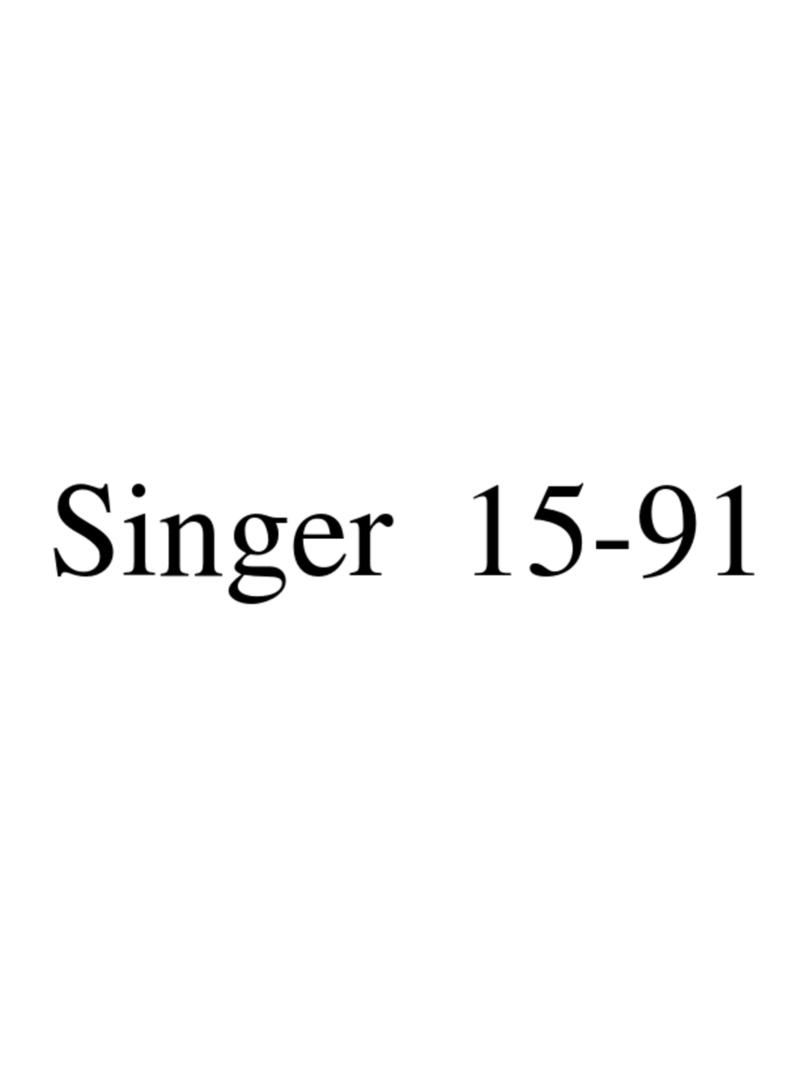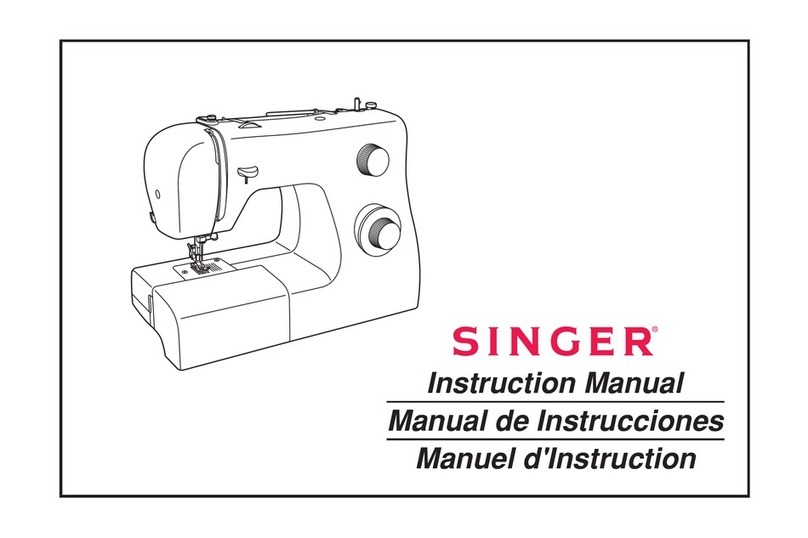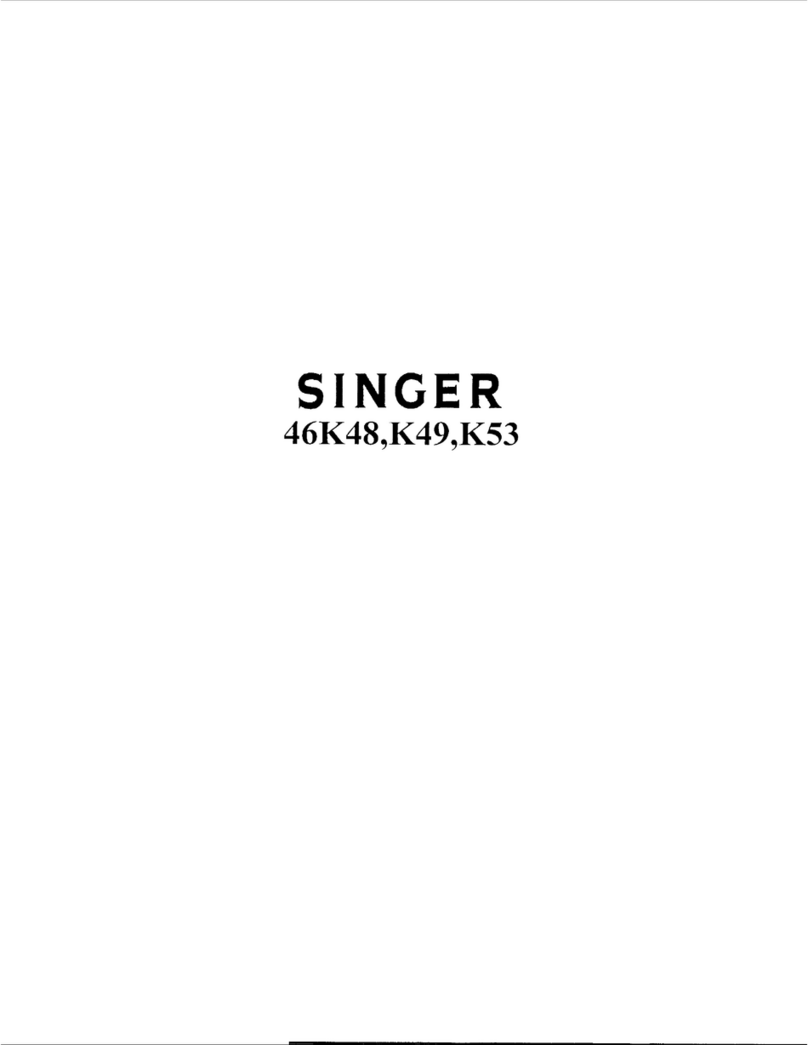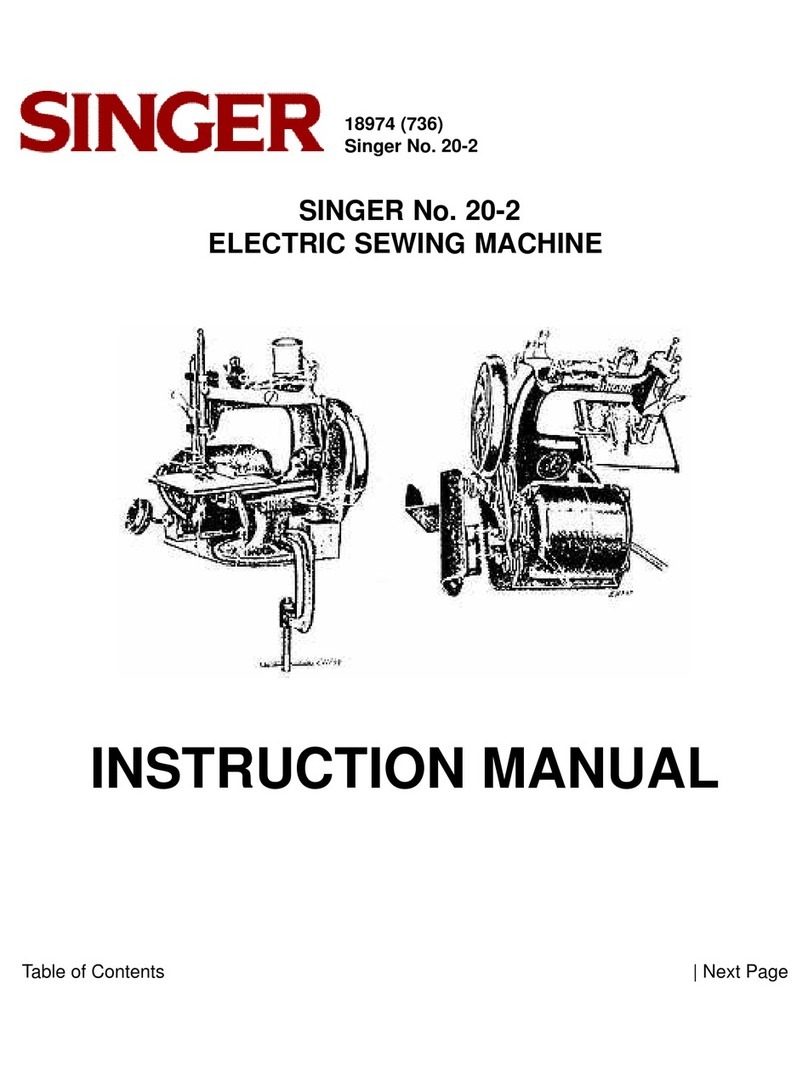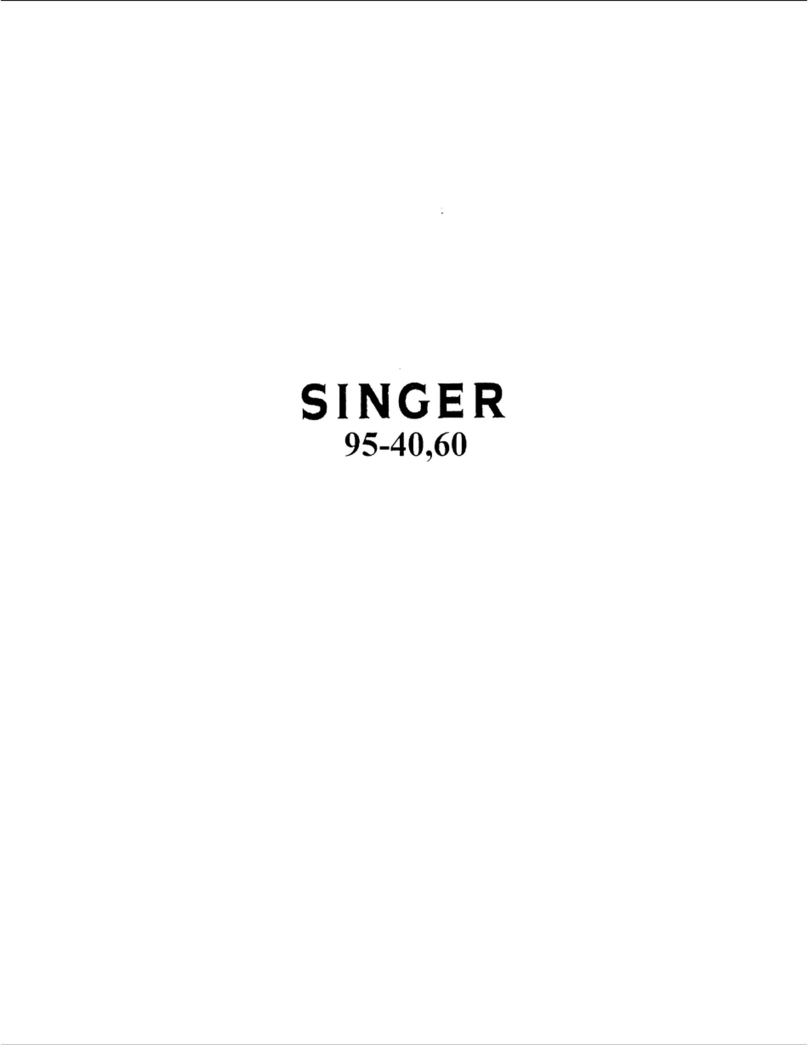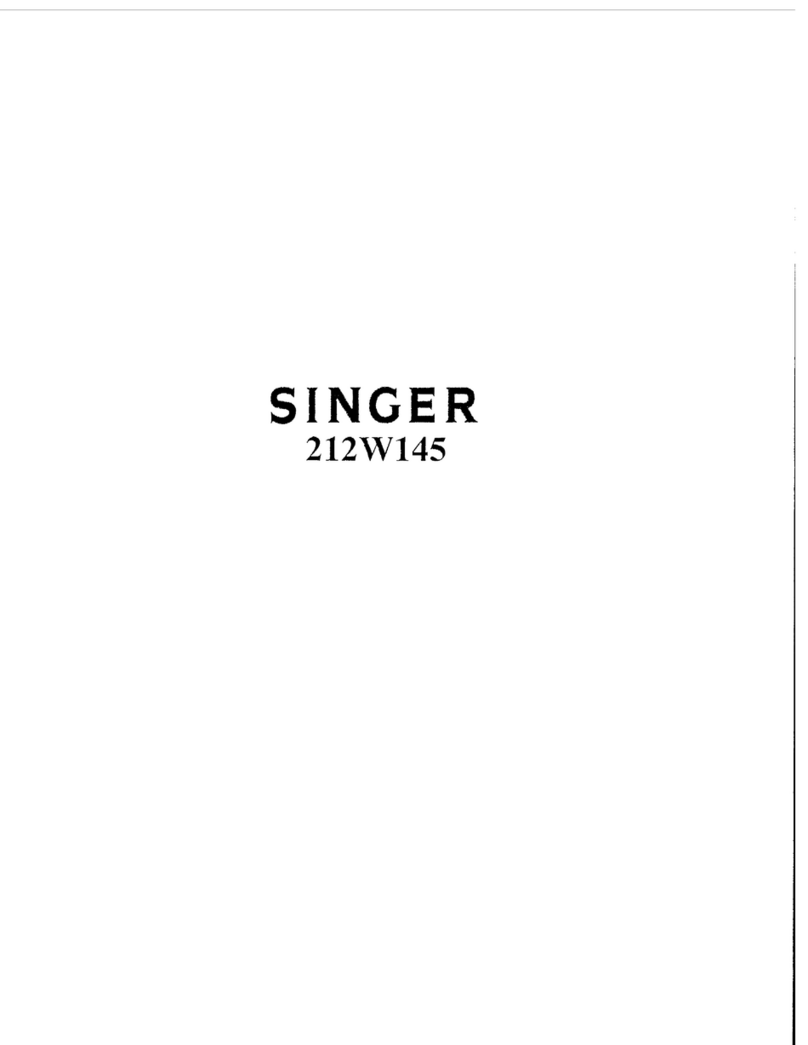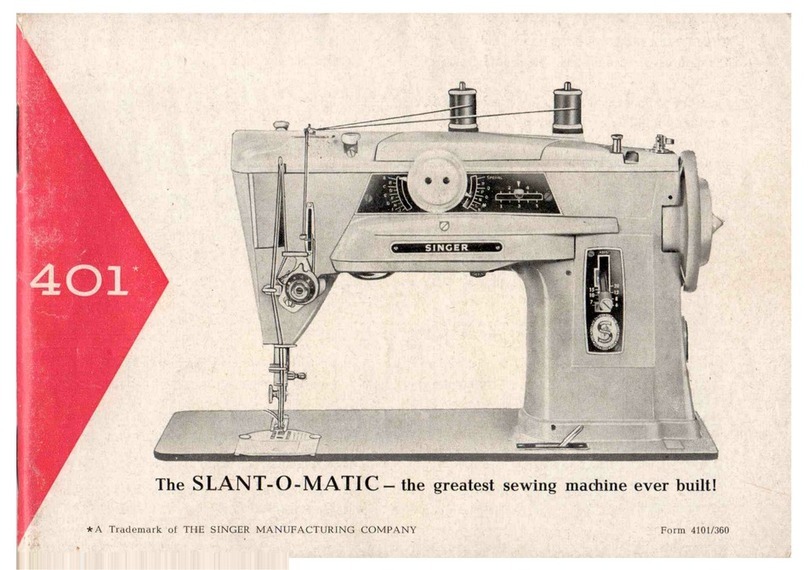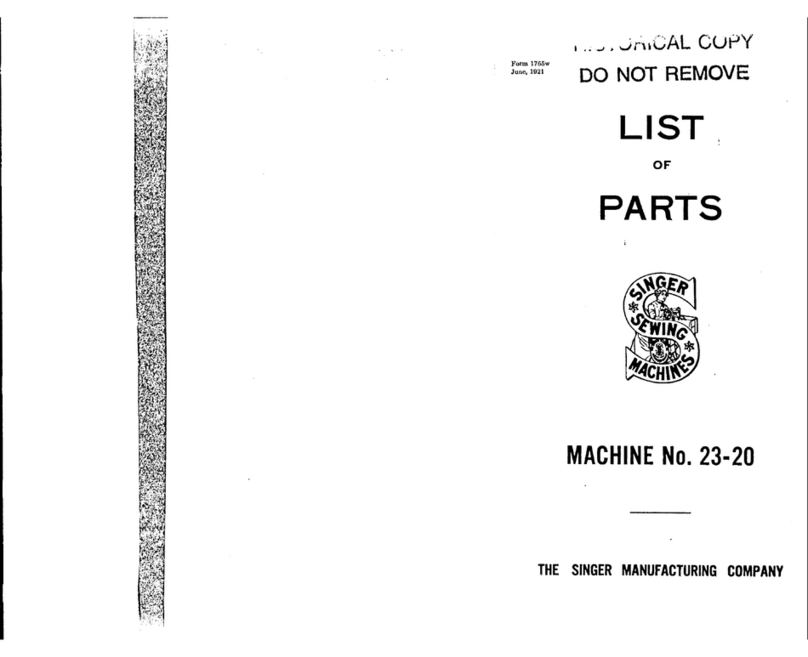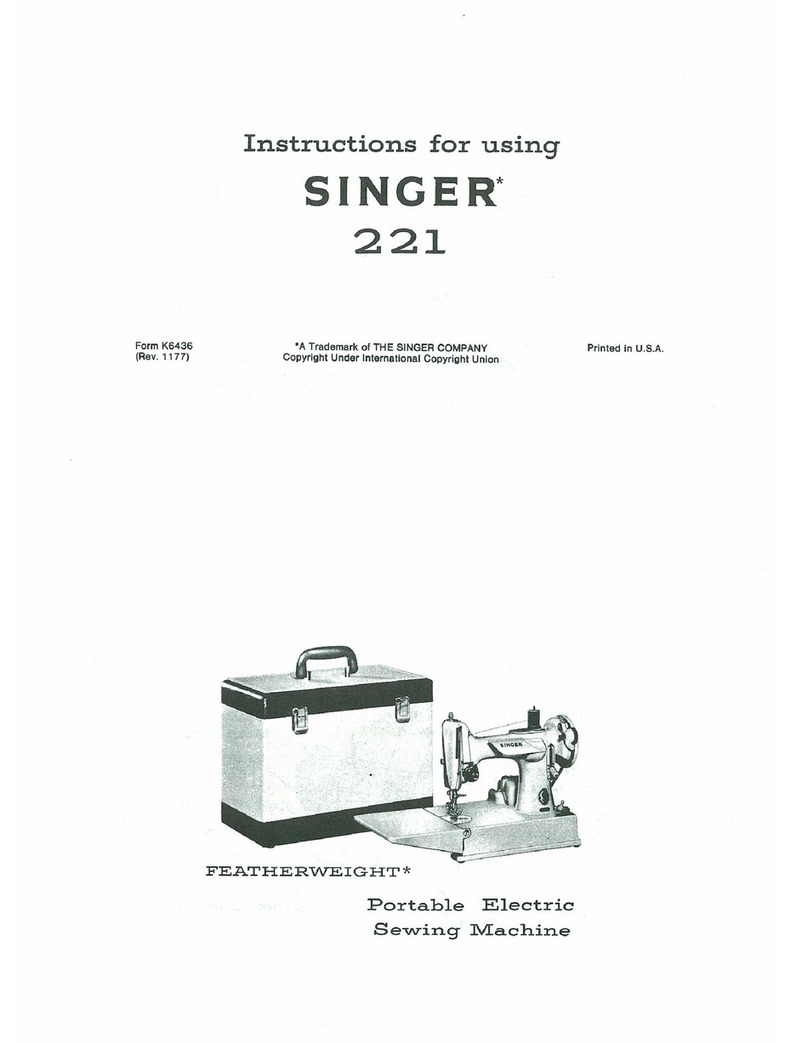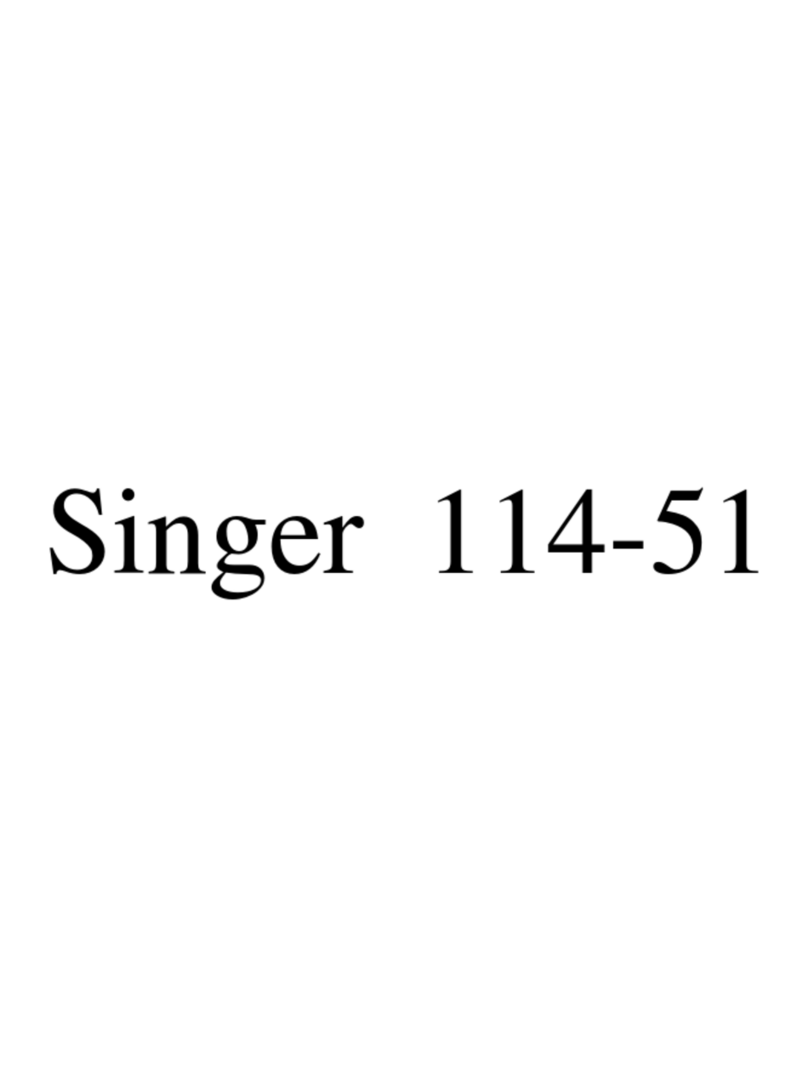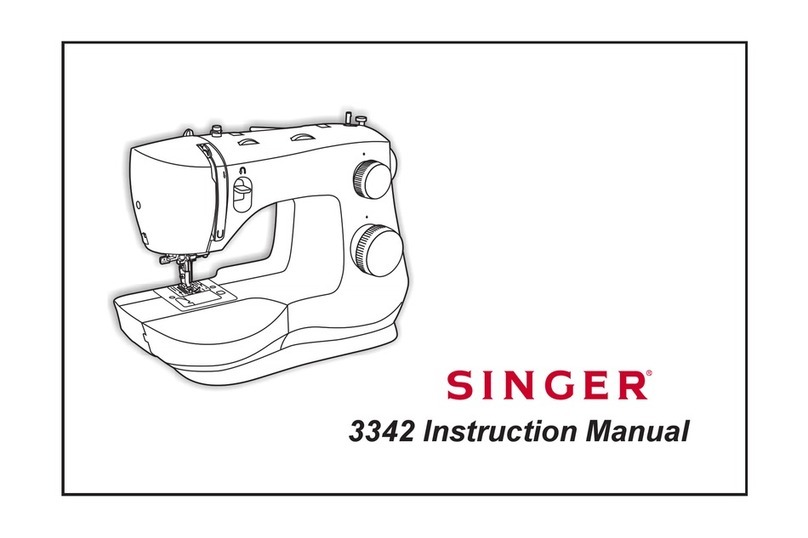
6
TO
REPLAC
L
T.HE
BOBBIN
-
AND
-
THREAD
-------
UPPER
-
THR
'
E~DI~G
~----'--~
THE BOBBIN
CASES
The following instructions
apply
to
both
bobbin
cases:
2 K
Fig. 8. Threading Bobbin Cases
Hold the
bobbin
between
the
thumb
and
forefinger
of
the
right
hand,
the
thread
on
the
bottom from left
to right,
and
place
ft
on
the
center
stud
of
the
bobbin
case,
then push
down
the
latch
K,
as
shown
in Fig.
B.
Draw
the
thread
into
the
slot 1
in
the
edge
of
the
bobbin
case
and
back
of
the
projection 2,
leaving
a
loose
end
of
thread
about
two
inches long
above
the
slide. When closing
the
slides,
leave
just
enough
space
for
the
threads
to
pass
through.
TO
SET
THE
NEEDLES
Turn
the
machine
pulley
over
toward
you
until
the
needle
bar
moves
up
to its
highest
point. Loosen
the
set
screws
In
the
needle
holder
and
put
the
needles
up
into the
holder
as
far
as
they
will go, with
the
long
grooves
of
the
needles
facing
each
other
and
the
eyes
of
both needles directly
in
line with
the
arm
of
the
machine, then tighten the set screws.
9 A_
~
-
8
ANDH
10
AND K
11
AND
L.
7
ANDG
Fig
. 9. Upper Threading
To
thread
the
left
needle
or
the
one
farthest
from
the
upright
part
of
the
arm,
pass
thread
from left spool
on
spool
stand
through
left
guide
at
top
of spool
stand,
down
through
hole
1,
then
through
hole 2
in
thread
guide
on
top
of
arm,
down
through
holes 3
and
4
in
thread
guide
at
front
of
machine,
over
from
right
to
left
between
tension discs 5,
down
under
from
right
to
left
around
thread
controller 6,
up
into fork 7
of
thread
controller
against
the
pressure
of
wire
controller
spring,
up
through
threqd
guide
8,
up
and
from
right
to left
through
upper
hole 9
in
end
of
thread
take-up
lever,
down
through
thread
guide
8
again
and
through
two
thread
guides
10
and
11,
down
through
left hole
12
in
needle
holder
and
from
right
to left
through
eye
of
left
or
outside
needle
13.
To
thread
the
right
needle
or
the
one
nearest
the
up-
right
part
of
the
arm,
pass
thread
from
right
spool
on
spool
stand
through
right
guide
at
top
of
spool
stand,
down
through
hole A,then
through
hole B
in
thread
guide
on
top
of
arm,
down
through
holes C
and
D
in
thread
guide
in
front
of
machine,
under
from
right
to
left
between
right
tension discs
E,
down
under
from
right to left
around
thread
controller
F,
up
into fork G
of
thread
controller
against
the
pressure
of
wire
con-
troller spring,
up
through
thread
guide
H,
up
and
from
right to left
through
lower
hole J
in
end
of
thread
take-up
lever,
down
through
thread
guide
H
again
and
through
two
thread
guides
K
and
L,
down
through
right hole M
in
needle
holder
and
from left to right
through
eye
of
right
or
inside
needle
N.
Draw
about
three
inches
of
thread
through
the
eye
of
each
needle
with which to
begin
sewing.
From the library of: Superior Sewing Machine & Supply LLC

